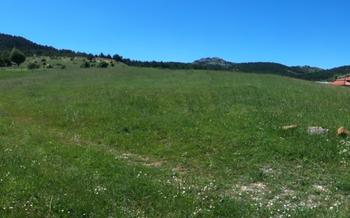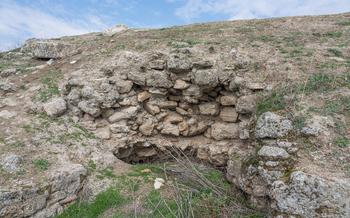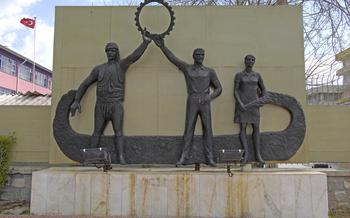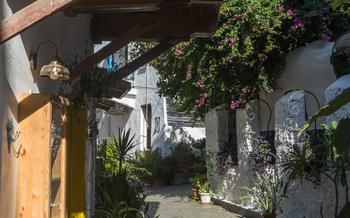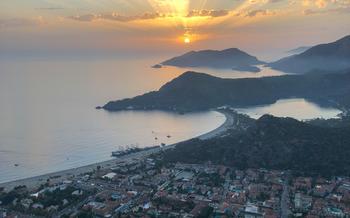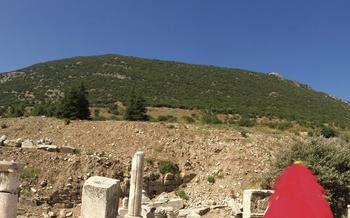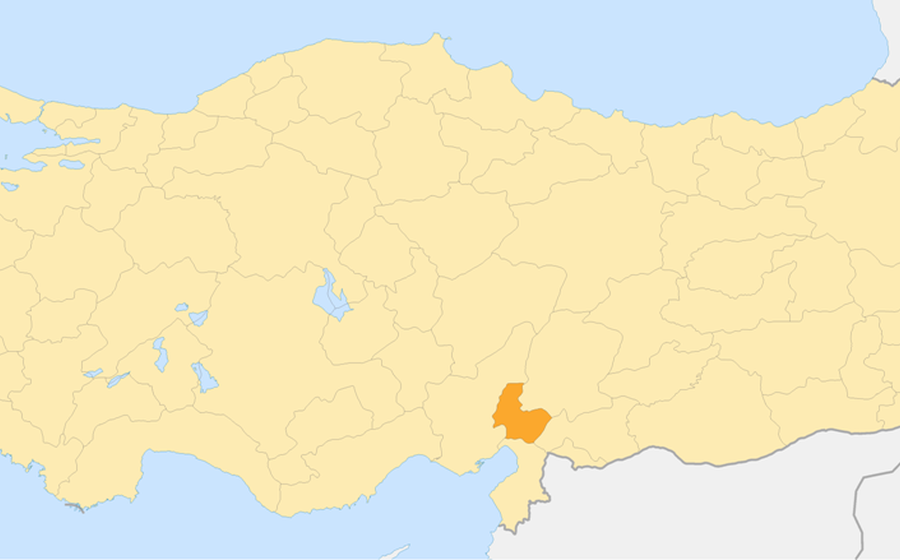
Kastabala City Ruins
- The Antiquity of Kastabala
- Exploring the Ruins
- The Theater of Kastabala: A Stage for History
- The Agora of Kastabala
- Kastabala's Temples and Religious Sites
- The City Walls of Kastabala
- The Aqueduct of Kastabala: An Engineering Marvel
- The Necropolis of Kastabala: Unveiling Ancient Funerary Customs
- Local Cuisine and Delicacies
- Festivals and Events in Osmaniye
- Natural Wonders Near Kastabala
- Souvenirs and Handicrafts
The Antiquity of Kastabala
Kastabala, an ancient city nestled in the heart of Osmaniye, Turkey, boasts a rich and storied past that dates back to the dawn of civilization. Its strategic location along major trade routes transformed it into a flourishing metropolis during the Bronze Age. As centuries passed, Kastabala became a coveted prize, attracting the attention of powerful empires and ambitious rulers.
The arrival of Alexander the Great in 333 BC marked a pivotal moment in the city's history. The Macedonian conqueror recognized the city's strategic importance and incorporated it into his vast empire, ushering in an era of prosperity and cultural exchange. Under Alexander's patronage, Kastabala became a hub of Hellenistic culture, blending Greek influences with local traditions.
The Roman Empire's rise to power brought further transformation to Kastabala. The city became a thriving center of commerce, boasting impressive infrastructure, public buildings, and a bustling marketplace. The Romans left an indelible mark on the city's architecture, constructing grand structures such as the theater, agora, and temples that still stand today as testaments to their engineering prowess.
As the Byzantine Empire succeeded the Roman Empire, Kastabala maintained its status as a significant urban center. The city embraced Christianity, and numerous churches and monasteries were erected, adding to its rich religious heritage. Throughout the centuries, Kastabala witnessed the rise and fall of empires, hosting notable figures and playing a crucial role in shaping the region's cultural and historical tapestry.
Exploring the Ruins
Kastabala's ruins are a testament to its rich history and grandeur. Among the must-see attractions are the theater, the agora, and the temples. The theater, with its well-preserved seating arrangements and excellent acoustics, offers a glimpse into the city's vibrant cultural life. The agora, once a bustling marketplace, has yielded many artifacts during excavations, providing insights into the daily lives of Kastabala's inhabitants. The city walls, with their impressive fortifications, stand as a reminder of Kastabala's strategic importance and its ability to withstand invasions.
For a comprehensive understanding of the ruins, a guided tour is highly recommended. Knowledgeable guides can provide historical context, point out hidden details, and answer questions. However, if you prefer self-exploration, detailed maps and guidebooks are available to help you navigate the site. Remember to wear comfortable shoes as the ground can be uneven, and bring water and a hat to protect yourself from the sun.
The Theater of Kastabala: A Stage for History
The theater of Kastabala stands as a testament to the city's rich cultural heritage. Built during the Roman era, this magnificent structure is a marvel of ancient architecture. With a seating capacity of over 10,000 spectators, it was one of the largest theaters in the region.
The theater's acoustics are exceptional, ensuring that even those seated in the uppermost rows could hear the actors' voices clearly. This remarkable feat of engineering allowed for immersive performances that transported audiences to distant lands and mythical realms.
Throughout history, the theater has hosted a variety of events, from dramatic plays and musical concerts to gladiatorial contests and public announcements. It was a central gathering place for the citizens of Kastabala, where they came together to celebrate, mourn, and experience the power of live entertainment.
Today, visitors can explore the theater's well-preserved ruins and imagine the vibrant atmosphere that once filled this ancient space. The stage, orchestra pit, and seating tiers are still clearly visible, offering a glimpse into the grandeur of Kastabala's theatrical traditions.
The Agora of Kastabala
The agora, or marketplace, was the bustling heart of ancient Kastabala. Located in the city's center, it served as a vibrant hub for trade, social gatherings, and political discussions. Excavations at the agora have unearthed a wealth of artifacts, providing valuable insights into the daily lives of Kastabala's inhabitants.
These discoveries include pottery, coins, tools, and remnants of market stalls, offering a glimpse into the diverse goods and services that were exchanged here. The agora's central location and proximity to the theater and other public buildings further underscore its significance as a focal point of civic life.
Strolling through the agora's well-preserved ruins, visitors can imagine the hustle and bustle of merchants hawking their wares, the animated conversations of philosophers and politicians, and the lively atmosphere that permeated this ancient marketplace. It is a place where history comes alive, inviting visitors to step back in time and experience the vibrant essence of Kastabala's past.
If you're looking for souvenirs or local products to take home, the area surrounding the agora is a great place to start. You'll find a variety of shops selling traditional handicrafts, antiques, and other unique items. Be sure to haggle for a good price, as bargaining is a common practice in Turkey.
Kastabala's Temples and Religious Sites
Kastabala's religious devotion is evident in the numerous temples scattered throughout the city. The most prominent among them is the Temple of Zeus, an awe-inspiring testament to the city's reverence for the king of the gods. Constructed in the 2nd century AD, this grand temple dominates the city's skyline with its towering columns and intricate carvings depicting scenes from Greek mythology. Its grandeur reflects the importance of Zeus in the lives of the ancient Kastabalians.
Equally noteworthy is the Temple of Apollo, dedicated to the god of music, poetry, and healing. Its elegant architecture and well-preserved mosaics offer a glimpse into the city's artistic and cultural heritage. The Temple of Artemis, goddess of hunting and nature, is another significant religious site, showcasing the diversity of deities worshipped in ancient Kastabala.
These temples served as centers of religious rituals, festivals, and community gatherings. They were places where people sought divine guidance, celebrated religious holidays, and paid homage to their gods. Visitors to Kastabala can still feel the sacred atmosphere that permeates these ancient sanctuaries, offering a unique opportunity to connect with the city's spiritual past.
When visiting these religious sites, it's essential to be respectful of their sacred nature. Proper attire and behavior are expected, and visitors should refrain from touching or disturbing any artifacts or religious symbols. By observing these courtesies, we can help preserve these ancient treasures for future generations to appreciate.
The City Walls of Kastabala
The ancient city of Kastabala was once enclosed within an impressive circuit of walls, a testament to its strategic importance and the ingenuity of its builders. These fortifications, constructed using massive blocks of stone, stood tall and strong, providing a formidable defense against invaders. The walls featured multiple gates, allowing controlled access to the city and facilitating trade and communication with the outside world.
Exploring the city walls of Kastabala is a captivating experience, offering a glimpse into the engineering prowess of the past. Visitors can trace the perimeter of the walls, marveling at their sheer size and the intricate masonry techniques employed in their construction. Along the way, they can admire the preserved towers and bastions that once served as vantage points for the city's defenders.
To ensure a safe and enjoyable exploration, it is advisable to wear comfortable shoes and bring along sufficient water, especially during the summer months. Visitors should also be mindful of their surroundings and avoid climbing or leaning on unstable structures. Guided tours are available for those who wish to delve deeper into the history and significance of the city walls. These tours provide expert insights and anecdotes, enhancing the overall experience.
The Aqueduct of Kastabala: An Engineering Marvel
The aqueduct of Kastabala stands as a testament to the ingenuity and engineering prowess of the ancient city's inhabitants. This remarkable structure, stretching for several kilometers, was meticulously designed to channel water from distant springs into the heart of Kastabala, providing a vital lifeline for its residents.
The construction of the aqueduct involved overcoming significant challenges, including rugged terrain and elevation differences. The ancient builders employed impressive techniques to ensure a steady flow of water, utilizing gravity and carefully engineered channels. The aqueduct's durability is a testament to their skill, as it has withstood the test of time and remains a marvel of ancient hydraulic engineering.
Beyond its functional purpose, the aqueduct also played a crucial role in the daily lives of Kastabala's citizens. It facilitated sanitation, irrigation, and the operation of public baths, contributing to the city's overall health and well-being. The aqueduct's steady flow of water also supported economic activities, such as agriculture and trade, contributing to the city's prosperity.
In recent years, restoration efforts have been undertaken to preserve this remarkable structure, ensuring its legacy for future generations. Visitors can marvel at the aqueduct's grandeur, appreciate the engineering ingenuity behind its construction, and gain insights into the daily life of ancient Kastabala.
The Necropolis of Kastabala: Unveiling Ancient Funerary Customs
Just outside the city walls of Kastabala lies a poignant reminder of the city's past inhabitants: the necropolis, or ancient cemetery. This sprawling site is a treasure trove of information about funerary customs and practices in the ancient world.
As you wander through the necropolis, you'll encounter a diverse array of tombs, each offering a glimpse into the lives and beliefs of those who once called Kastabala home. From simple rock-cut graves to elaborate chamber tombs, these resting places showcase the varied social and economic strata of the city's population.
Pay close attention to the inscriptions and carvings adorning many of the tombs. These poignant messages and symbols provide valuable insights into the lives and legacies of the deceased, offering a glimpse into their hopes, fears, and aspirations.
The necropolis also offers a unique perspective on the religious beliefs of the ancient Kastabalians. The presence of both pagan and Christian tombs suggests a period of religious transition, as the city embraced new faiths while still honoring its traditional deities.
To fully appreciate the significance of the necropolis, consider booking a guided tour. Knowledgeable guides can provide expert insights into the symbolism and history of the tombs, helping you to piece together the lives of those who once walked the streets of Kastabala.
When visiting the necropolis, remember to be respectful of the dead and the sanctity of this ancient burial ground. Refrain from touching or disturbing any artifacts or remains, and maintain a quiet and contemplative atmosphere.
By exploring the necropolis of Kastabala, you'll gain a deeper understanding of the city's rich history and the lives of its people. This poignant site offers a glimpse into the past, reminding us of the enduring legacy of those who came before us.
Local Cuisine and Delicacies
The flavors of Osmaniye's cuisine are a reflection of its rich history and diverse cultural influences. A must-try is the "Osmaniye kebabı," a succulent grilled meat dish that embodies the region's culinary traditions. Don't miss the "cevizli sucuk," a unique local sausage made with walnuts, offering a delightful blend of sweet and savory. For a taste of the sea, savor the "Osmaniye balık," a freshly caught fish prepared with aromatic herbs and spices. Vegetarians will delight in "yaprak sarması," tender vine leaves stuffed with rice, herbs, and spices. When in Osmaniye, indulge in the local delicacies and support the vibrant culinary scene. Ask for recommendations at your hotel or a local restaurant to discover hidden gems and authentic flavors.
Festivals and Events in Osmaniye
Osmaniye's vibrant cultural calendar is a reflection of its rich history and traditions. Throughout the year, the region hosts a variety of festivals and events that showcase the local heritage and provide a glimpse into the lives of its people.
One of the most prominent events is the Osmaniye Cherry Festival, held annually in June to celebrate the region's abundant cherry harvest. This colorful festival features traditional music, dance performances, and a variety of cherry-themed activities, including cherry-eating contests and cherry-pit spitting competitions.
Another highlight is the Osmaniye International Olive Oil Festival, held in October or November, which brings together olive growers, producers, and enthusiasts from around the world. Visitors can sample a variety of locally produced olive oils, learn about the region's olive-growing traditions, and participate in workshops and demonstrations.
For those interested in history and culture, the Osmaniye History and Culture Festival offers a unique opportunity to delve into the region's rich past. Held annually in September, the festival features exhibitions, lectures, and performances that showcase Osmaniye's historical landmarks, traditional crafts, and culinary delights.
To experience the vibrant energy of Osmaniye, plan your visit to coincide with one of these festivals or events. These celebrations provide an authentic and immersive way to connect with the local community and create lasting memories of your time in this beautiful region.
Natural Wonders Near Kastabala
The natural beauty surrounding Osmaniye is breathtaking and offers an array of experiences for visitors. A short drive from the ruins of Kastabala, you'll find stunning waterfalls, mysterious caves, and majestic mountains waiting to be explored.
Waterfalls:
For a refreshing escape, visit the nearby waterfalls, where crystal-clear water cascades over rocky cliffs into tranquil pools below. Take a dip in the cool water, relax to the sound of falling water, and soak in the serene atmosphere.
Caves:
Venture into the depths of the nearby caves, where stalactites and stalagmites create otherworldly formations. Explore the hidden chambers and tunnels, marveling at the intricate patterns and colors that adorn the cave walls.
Mountains:
For those who love hiking and adventure, the surrounding mountains offer challenging trails and breathtaking views. Trek through lush forests, ascend to panoramic summits, and witness the stunning scenery that unfolds before you.
Activities:
In addition to hiking, swimming, and birdwatching, there are plenty of other activities to enjoy in the natural surroundings of Kastabala. Have a picnic by a babbling brook, go horseback riding through the countryside, or simply relax and soak up the tranquility of nature.
Responsible Exploration:
When exploring the natural wonders near Kastabala, it's important to be respectful of the environment and local communities. Avoid littering, stay on designated trails, and be mindful of noise levels. Support sustainable tourism by choosing local guides and businesses that prioritize conservation.
Souvenirs and Handicrafts
Kastabala and Osmaniye are treasure troves of unique souvenirs and handicrafts that capture the essence of the region. From intricately woven carpets and kilims to exquisite pottery and ceramics, there's something for every taste and budget. Don't miss the opportunity to support local artisans by purchasing their handcrafted goods.
For authentic souvenirs, head to the local bazaars and markets. Here, you'll find a vibrant array of handmade products, from jewelry and accessories to traditional clothing and home décor. Haggling is expected, so don't be afraid to bargain for a good price.
If you're looking for something truly special, visit the workshops of local artisans. You'll have the chance to observe their craftsmanship firsthand and purchase one-of-a-kind pieces that are sure to become cherished mementos of your trip.
When shopping for souvenirs, remember to be respectful of local customs and traditions. Ask permission before taking photos of artisans at work, and always handle their products with care. By supporting local craftspeople, you're not only taking home a piece of Kastabala and Osmaniye, but also contributing to the preservation of their rich cultural heritage.
